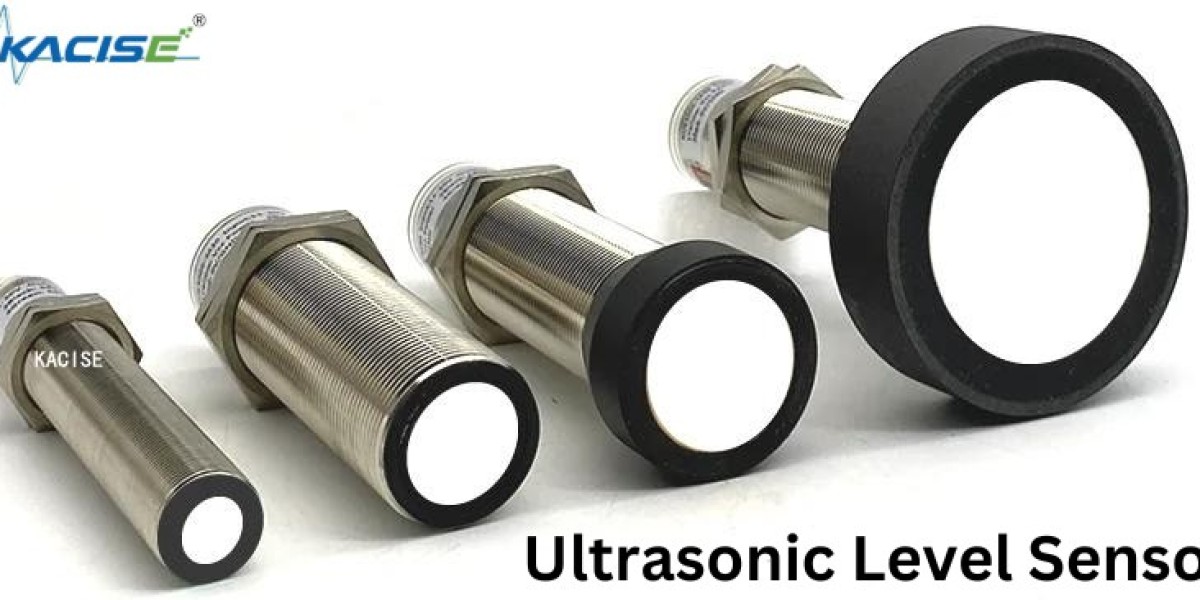This blog explores the principles behind ultrasonic level sensors, their various applications across industries, and the benefits they offer, making them a popular choice for monitoring levels in tanks, silos, and other storage containers.
Principles of Ultrasonic Level Sensors
Ultrasonic level sensors operate on the principle of echolocation, similar to how bats navigate using sound waves. These sensors emit ultrasonic sound waves that travel through the air, and when these waves encounter a surface, they are reflected to the sensor. The sensor measures the time taken for the sound waves to return and calculates the distance to the surface based on the speed of sound in the air.
The key components of an ultrasonic level sensor include:
Transducer: This is the main component that emits and receives ultrasonic waves. It converts electrical energy into sound waves and vice versa.
Controller: The controller processes the time-of-flight data and calculates the distance to the measured surface. It often includes a digital display and can be integrated with control systems.
Output Signal: Ultrasonic level sensors typically provide output signals such as 4-20 mA, 0-10 V, or digital signals for easy integration with monitoring and control systems.
Applications of Ultrasonic Level Sensors
Ultrasonic level sensors are versatile and find applications across a wide range of industries, including:
Water and Wastewater Management: These sensors monitor water levels in treatment plants, reservoirs, and stormwater systems, helping manage resources efficiently and ensure environmental compliance.
Oil and Gas: In the oil and gas industry, ultrasonic sensors are used to measure levels in storage tanks and separators, providing essential data for safety and operational efficiency.
Food and Beverage: The food and beverage sector employs ultrasonic-level sensors for measuring ingredients and liquids in processing tanks, ensuring consistent quality and compliance with health standards.
Chemical Processing: Ultrasonic sensors play a vital role in monitoring chemical levels in storage tanks, minimizing risks associated with spills and leaks.
Pharmaceuticals: In the pharmaceutical industry, precise measurement of liquid levels is crucial for maintaining product quality and safety, making ultrasonic sensors an ideal choice.
Benefits of Ultrasonic Level Sensors
Ultrasonic-level sensors offer numerous advantages that contribute to their growing popularity:
Non-contact Measurement: Unlike other level measurement technologies, ultrasonic sensors do not require direct contact with the measured material, reducing wear and tear and ensuring longevity.
High Accuracy and Reliability: These sensors provide precise measurements even in challenging conditions, such as turbulence, foam, or varying temperatures.
Easy Installation and Maintenance: Ultrasonic sensors are relatively easy to install and require minimal maintenance, making them a cost-effective solution for level measurement.
Wide Range of Measurement: Ultrasonic level sensors can measure levels in various applications, from small containers to large tanks, offering flexibility across industries.
Safety and Compliance: By providing real-time data, ultrasonic sensors help industries adhere to safety regulations and prevent potential hazards associated with overflows and leaks.
Conclusion
Ultrasonic level sensors are revolutionizing the way industries measure liquid and solid levels, providing a reliable and efficient solution for a variety of applications. With their non-contact measurement capabilities, high accuracy, and ease of use, these sensors are essential tools for modern industrial processes. As technology continues to advance, the future of ultrasonic-level sensing looks promising, paving the way for even more innovative applications in the years to come.










